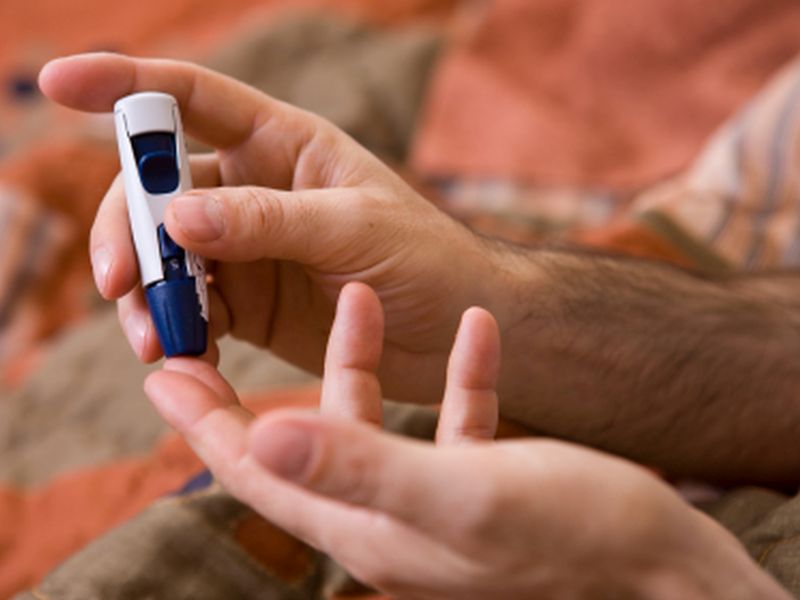Reducing basal rate by 80 percent or stopping pump for moderate or intense exercise

Insulin-based strategies of basal rate reduction or pump cessation may be the best approach in avoiding hypoglycemia associated with exercise after lunch, according to a study published online Oct. 8 in Diabetes, Obesity & Metabolism. Sylvia Franc, M.D., from the Centre for Study and Research for Improvement of the Treatment of Diabetes in Evry, France, and colleagues validated strategies to prevent exercise-induced hypoglycemia via insulin dose adjustment. Twenty adults with type 1 diabetes on pump therapy were randomized to perform four 30-minute late post-lunch exercise sessions (two moderate sessions with 50 or 80 percent basal rate [BR] reduction during exercise, and two intense sessions, with 80 percent BR reduction or with their pump stopped; all performed three hours after lunch) and a rest session. Hypoglycemia incidence was compared for BR reduction versus bolus reduction in two early post-lunch sessions (90 minutes after lunch). The researchers found that, compared with the rest session, in the afternoon, no more hypoglycemia events occurred with 80 percent BR reduction/moderate exercise or with pump discontinuation/intense exercise, while more hypoglycemic events occurred with 50 percent BR reduction/moderate exercise and 80 percent BR reduction/intense exercise. There was a trend toward fewer hypoglycemic episodes with bolus reduction versus BR reduction (P = 0.07). "To limit the hypoglycemic risk associated with 30 minutes of exercise three hours after lunch, without carbohydrate supplements, the best options seem to be to reduce BR by 80 percent or to stop the pump for moderate or intense exercise," the authors write. From http://www.physiciansbriefing.com/ Nyhetsinfo ABSTRACT AimsTo validate strategies to prevent exercise-induced hypoglycaemia via insulin-dose adjustment in adult patients with type 1 diabetes (T1D) on pump therapy. MethodsA total of 20 patients randomly performed four 30-min late post-lunch (3 h after lunch) exercise sessions and a rest session: two moderate sessions [50% maximum oxygen consumption (VO2max)] with 50 or 80% basal rate (BR) reduction during exercise + 2 h and two intense sessions (75% VO2max) with 80% BR reduction or with their pump stopped. Two additional early post-lunch sessions (90 min after lunch) were analysed to compare hypoglycaemia incidence for BR reduction versus bolus reduction. ResultsIn all, 100 late post-lunch sessions were analysed. Regardless of exercise type and BR reduction, no more hypoglycaemic events occurred in the period until the next morning than occurred after the rest sessions. In the afternoon, no more hypoglycaemic events occurred with 80% BR reduction/moderate exercise or with pump discontinuation/intense exercise than for the rest session, whereas more hypoglycaemic events occurred with 50% BR reduction/moderate exercise and 80% BR reduction/intense exercise. After early post-lunch exercise (n = 37), a trend towards fewer hypoglycaemic episodes was observed with bolus reduction versus BR reduction (p = 0.07). Mean blood glucose fell by ∼3.3 mmol/l after 30 min of exercise, irrespective of dose reduction, remaining stable until the next morning with no rebound hyperglycaemia. ConclusionIn adults with T1D, to limit the hypoglycaemic risk associated with 30 min of exercise 3 h after lunch, without carbohydrate supplements, the best options seem to be to reduce BR by 80% or to stop the pump for moderate or intense exercise, or for moderate exercise 90 min after lunch, to reduce the prandial bolus rather than the BR. HELA ARTIKELN i pdf utan lösen http://onlinelibrary.wiley.com/doi/10.1111/dom.12552/epdf www red DiabetologNytt |
